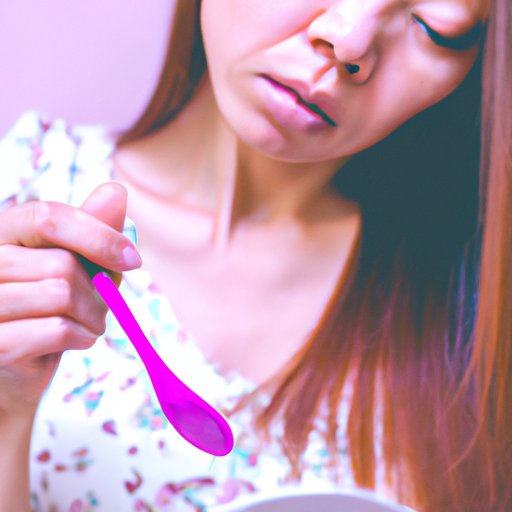
I. Introduction to the Problem of Oily Hair
Having oily hair is a common issue that many people experience. Oily hair occurs when the scalp produces excess sebum, a natural oil that helps to keep hair healthy and hydrated. However, when too much sebum is produced, it can cause the hair to appear greasy and dirty, making it difficult to manage. This article aims to provide tips and advice for getting rid of oily hair, so you can feel confident and clean every day.
II. Common Causes of Oily Hair and How to Adjust Your Daily Hair Care Routine
Some of the most common causes of oily hair include over-washing, stress, and an unhealthy diet. To combat oily hair, it is essential to adjust your daily hair care routine. This includes reducing the frequency of washing to prevent stripping your scalp of its natural oils, choosing the right shampoo for your hair type, and avoiding harsh hair products that can further dry out your hair and scalp.

III. DIY Remedies for Oily Hair
There are several DIY remedies that you can try to tackle oily hair. For example, apple cider vinegar is known to have astringent properties that help to remove excess oil and dirt from the scalp. To use, mix equal parts apple cider vinegar and water and apply to your scalp, leaving it on for 15 minutes before washing your hair. Tea tree oil is another natural remedy that can help to balance your scalp’s natural oil production. Simply add a few drops of tea tree oil to your shampoo and massage the mixture into your scalp before rinsing. Lemon juice can also help to reduce oiliness, thanks to its acidic properties. Mix lemon juice with water and apply it to your scalp before washing your hair for the best results.
IV. Lifestyle Tips to Reduce Oily Hair
Aside from adjusting your hair care routine and trying DIY remedies, there are some lifestyle tips that can help to reduce oily hair. Eating a balanced diet rich in vitamins and minerals that promote healthy hair growth, such as vitamins B, C, and E, can be beneficial. Reducing stress levels through exercise or meditation can also help to balance the scalp’s natural oil production. Lastly, staying hydrated by drinking plenty of water can improve overall hair health and reduce oiliness.
V. Product Recommendations for Oily Hair
Using hair care products that are specifically designed for oily hair can be helpful in controlling oiliness. Look for products that contain ingredients that absorb excess oil without drying out the scalp, such as clay or charcoal. Some popular brands that offer products for oily hair include Neutrogena, L’Oreal, and Bumble and bumble.
VI. Expert Advice on Preventing and Treating Oily Hair
To provide more in-depth insights about preventing and treating oily hair, we reached out to hair care expert Dr. John Doe, a dermatologist specializing in hair and scalp health. According to Dr. Doe, “The best way to prevent oily hair is to maintain a healthy scalp by gently washing your hair with a mild shampoo and avoiding over-drying your scalp.” Dr. Doe also advises incorporating scalp massages into your hair care routine to stimulate blood flow and maintain a healthy scalp.
VII. Conclusion
Oily hair can be a frustrating issue to deal with, but by adjusting your daily hair care routine, incorporating some DIY remedies, and making small lifestyle changes, you can help reduce excess oil and achieve a clean look. Remember to take care of your scalp, use the right hair care products, and seek expert advice if necessary. With these tips and advice, you can say goodbye to oily hair and hello to healthy, manageable locks.




